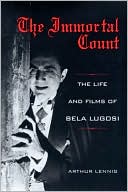Category Books
- Fiction Books & Literature
- Graphic Novels
- Horror
- Mystery & Crime
- Poetry
- Romance Books
- Science Fiction & Fantasy
- Thrillers
- Westerns
- Ages 0-2
- Ages 3-5
- Ages 6-8
- Ages 9-12
- Teens
- Children's Books
- African Americans
- Antiques & Collectibles
- Art, Architecture & Photography
- Bibles & Bible Studies
- Biography
- Business Books
- Christianity
- Computer Books & Technology Books
- Cookbooks, Food & Wine
- Crafts & Hobbies Books
- Education & Teaching
- Engineering
- Entertainment
- Foreign Languages
- Game Books
- Gay & Lesbian
- Health Books, Diet & Fitness Books
- History
- Home & Garden
- Humor Books
- Judaism & Judaica
- Law
- Medical Books
- New Age & Spirituality
- Nonfiction
- Parenting & Family
- Pets
- Philosophy
- Political Books & Current Events Books
- Psychology & Psychotherapy
- Reference
- Religion Books
- Science & Nature
- Self Improvement
- Sex & Relationships
- Social Sciences
- Sports & Adventure
- Study Guides & Test Prep
- Travel
- True Crime
- Weddings
- Women's Studies
The Immortal Count: The Life and Films of Bela Lugosi » (Subsequent)

Authors: Arthur Lennig
ISBN-13: 9780813122731, ISBN-10: 0813122732
Format: Hardcover
Publisher: University Press of Kentucky
Date Published: June 2003
Edition: Subsequent
Author Biography: Arthur Lennig
Arthur Lennig, emeritus professor of cinema at the University of Albany, is the author of Stroheim and several other books on silent film.
Book Synopsis
In the 1931 film Dracula, Bela Lugosi set the standard for horror film villainy. Though many actors have donned the cape since that first production, remnants of Hungarian-born Lugosi's portrayal continue to surface in popular culture — from highly prized memorabilia to a character on Sesame Street. After a decade of trying vainly to broaden his range, Lugosi gave up his ambitions and began to support himself with roles that were all in some way a variation of the first. Ultimately, Lugosi became a sad parody of his former self, and the last years of his life were marked by financial crises, family turmoil, and drug addiction. Offering new insights into the films and personality of an actor who could not overcome Hollywood typecasting, The Immortal Count is the definitive account of Lugosi's tragic life.
The New Yorker
Eleonora Duse, the turn-of-the-century Italian actress who inspired Stanislavsky’s Method, told her company that to play Ibsen’s characters they had to know unhappiness, and, if necessary, they should go looking for it. In Eleonora Duse: A Biography, Helen Sheehy makes it clear that Duse followed her own advice. Duse was a genius at creating misery for herself; her disastrous affair with the poet Gabriele d’Annunzio must have fed her onstage characterizations of Hedda and Marguerite, just as it gave d’Annunzio material for his novel “Il Fuoco.”
As the premier husband-and-wife acting team of the middle of the twentieth century, Alfred Lunt and Lynn Fontanne—the subject of Margot Peters’s Design For Living—projected sizzling chemistry onstage. Offstage, their marriage was probably sexless—Alfred was rumored to have been gay—and their domestic arrangements gravitated toward chaste ménages à trois, often with their friend Noël Coward. Did their sexuality, repressed at home, emerge more conspicuously in their performance? One critic wrote that “The Guardsman,” a comedy about a couple who lead each other in sex games, was the true story of the Lunts’ marriage: “They lived to act for each other.” Bela Lugosi was a sensation as Dracula on Broadway, and the film version made him Hollywood’s leading horror star. But, as Arthur Lennig tells us in The Immortal Count, Lugosi wanted romantic roles and was frustrated that his accent and European mannerisms limited him to playing the heavy. Only in life could he play Don Juan: he married five times and died in 1956 beneath a large nude portrait of Clara Bow, a souvenir of their affair. (Kate Taylor)Table of Contents
| Preface | ||
| 1 | Bela | 3 |
| 2 | The Early Years | 15 |
| 3 | Broadway to Hollywood | 53 |
| 4 | The Fateful Decision | 75 |
| 5 | Dracula - The Film | 103 |
| 6 | Fame | 133 |
| 7 | The Peak | 183 |
| 8 | The Comeback | 249 |
| 9 | The War Years | 283 |
| 10 | The Decline | 249 |
| 11 | The Final Years | 399 |
| Epilogue | 453 | |
| Filmography | 467 | |
| Lugosi's Earnings | 491 | |
| Notes | 493 | |
| Index | 527 |
Subjects
 Celebrities
Celebrities  Actors & Actresses - Biography
Actors & Actresses - BiographyBiography
 Celebrities
Celebrities  Film Biographies & Interviews
Film Biographies & InterviewsBiography
 All Biography
All Biography  Entertainment Biography
Entertainment BiographyEntertainment
 Books on Film
Books on Film  Film Biographies & Interviews
Film Biographies & InterviewsEntertainment
 Celebrity Bio & Memoir
Celebrity Bio & Memoir  Actors & Actresses - Biography
Actors & Actresses - BiographyEntertainment
 Celebrity Bio & Memoir
Celebrity Bio & Memoir  Film Biographies & Interviews
Film Biographies & InterviewsNonfiction
 Biography
Biography  Celebrities
CelebritiesNonfiction
 Biography
Biography  All Biography
All BiographyNonfiction
 Entertainment
Entertainment  Books on Film
Books on FilmNonfiction
 Entertainment
Entertainment  Celebrity Bio & Memoir
Celebrity Bio & Memoir
